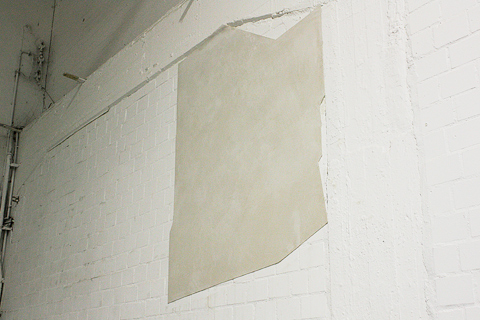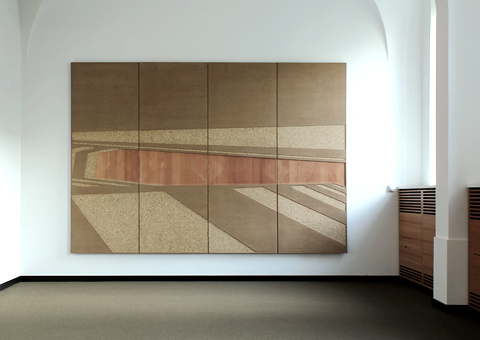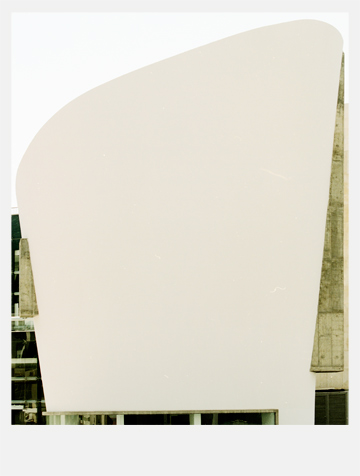Denise Winter arbeitet mit räumlichen Reduktionen und Verfremdungen. Häufig dient ihr eine selbst aufgenommene fotografische Vorlage als Ausgangspunkt für ihre konstruktivistische Auseinandersetzung mit Architektur und Landschaft. Mit ihren Lochbildkamera-Aufnahmen gelingt es ihr, den Moment des Unvorhersehbaren in ihre künstlerische Arbeit zu integrieren und produktiv zu nutzen, indem sie neue räumliche Situationen erschafft. In den installativen Arbeiten, die eine konsequente Fortführung ihrer Fotografien darstellen, führt sie die Entwicklung neuer Räumlichkeiten weiter. Schatten- und Umrisslinien, architektonische Ecksituationen werden aus ihrem ursprünglichen Kontext gelöst und als eigenständige Formen – als ausgefräste Leerstellen – in Aluminium- und auf Rohspanplatten übertragen. In weiteren Arbeitsschritten verfremdet Denise Winter diese Ursprungsform weiter, wenn sie durch Rollung oder Schichtung der Platten eine erneute Transformation erzielt. Nicht nur Raum findet so eine neue Entsprechung, ihre Objekte thematisieren demnach auch Zeitlichkeit, wenn geschichtetes und gerolltes Material den Entstehungsprozess deutlich macht.
Denise Winter works with spatial reductions and alienation effects. Often a self-shot photographic original serves as a starting point for her constructivist exploration of architecture and landscape. With her pinhole camera shots, she manages to integrate the moment of the unpredictable into her artistic work and to use it in a productive way by creating new spatial situations. In the installation pieces, which depict a consistent further development of her photographs, she pursues the construction of new spaces. Shadow- and outlines, architectural corner situations are taken from their original context and transferred as autonomous forms – as cut out spaces – to aluminium and chipboards. During the next work stages, Denise Winter defamiliarizes the original form further; by rolling up the sheets or arranging them in layers she achieves a renewed transformation. Not only space finds a new counterpart in this way, her objects thus also address temporality when the layered or rolled material reveals the process of its formation.
Text: Gwendolin Kremer
Vorschaubild thumbnail: Analyse (Treppe)_Variante01 aus Starren auf weiße Wände.

Form für S(Cihangir)
2015
Putz
150 x 180 x 0,2 cm
form for S(Cihangir)
2015
plaster
150 x 180 x 0,2 cm
Foto: Elly Valk-Verheijen

Atrium. Wo das Schaf und der Wolf aud dem Pelz kamen
2013
Buchevollholzplatten furniert mit Rohspanplatten
ca. 250 x 375 x 4 cm
Kunst am Bau im Bundesministerium für Ernährung, Landwirtschaft und Verbraucherschutz (BMELV), Berlin (beschränkter Realisierungswettbewerb)
Atrium. Where the sheep and the wolf came out of the fur
2013
beech veneered with chipboard
approx. 250 x 375 x 4 cm
art in architecture in the Federal Ministry of food, agriculture and consumer protection (BMELV), Berlin
Foto: D. Winter

Cameri aus der Serie city whitening
2015
Pigmentdruck auf Hahnemühle
82 x 62 cm
cameri from the series city whitening
2015
pigment print on Hahnemühle paper
82 x 62 cm